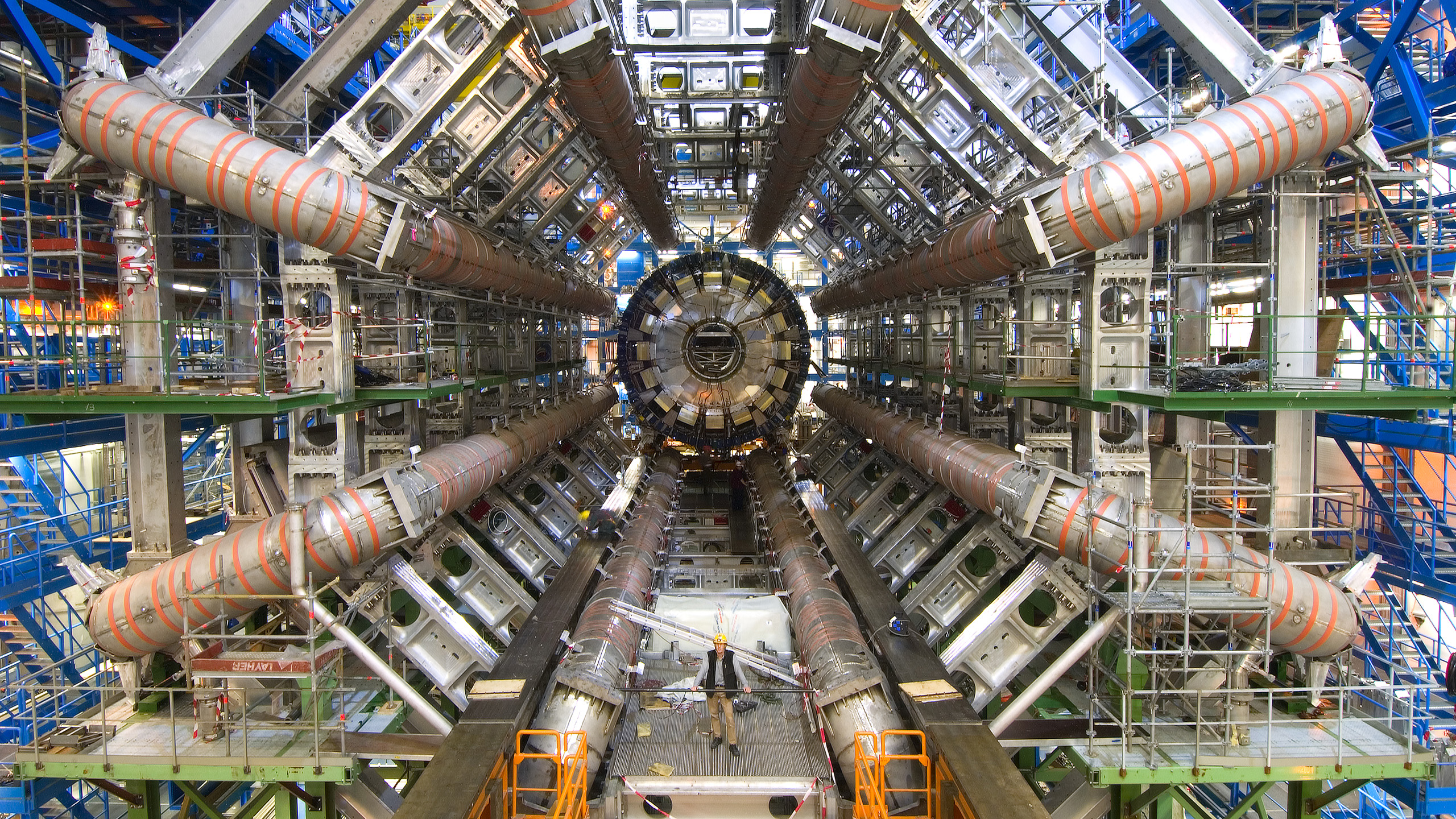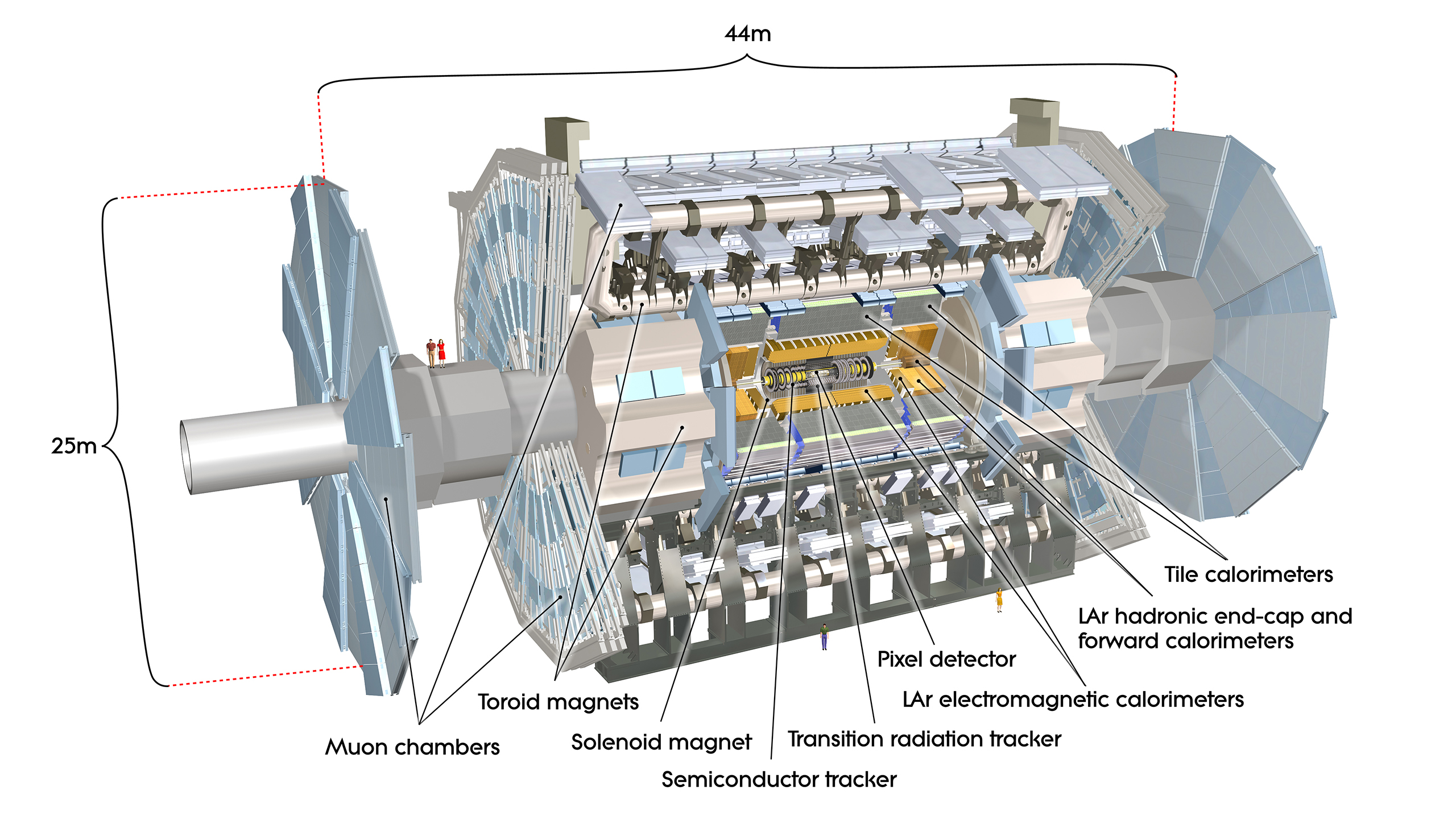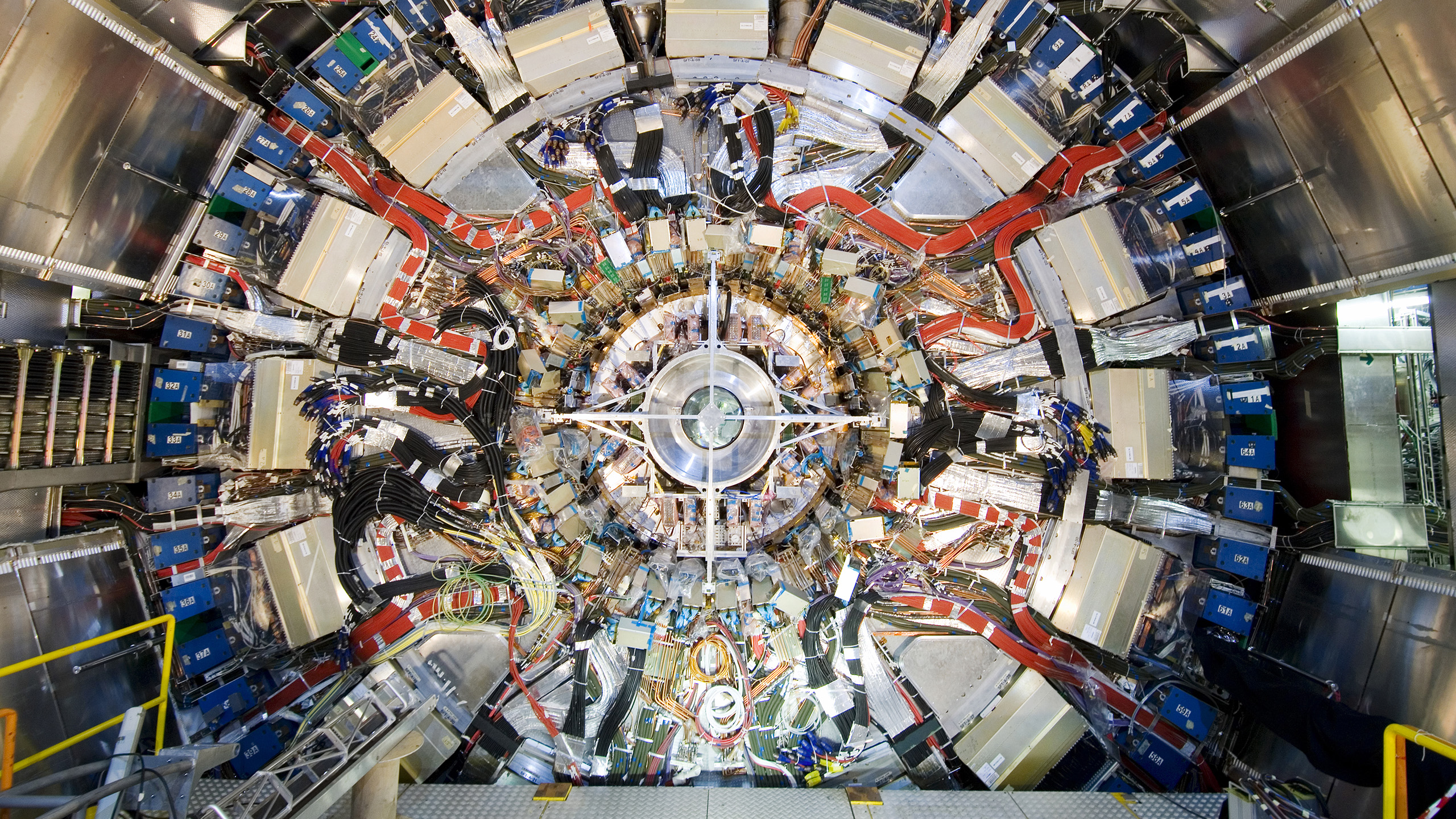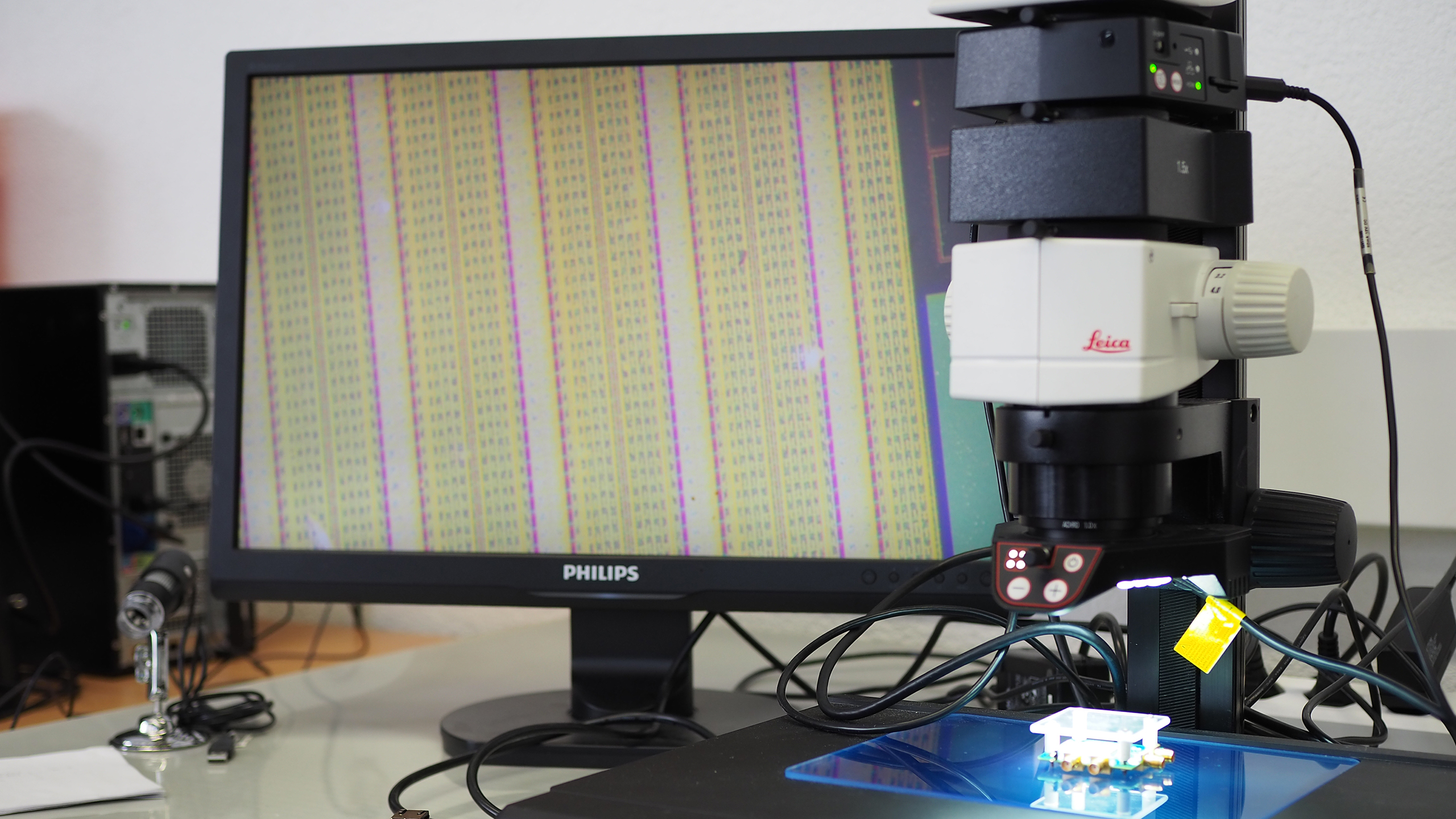Matter and the universe
ATLAS particle detector at CERN to be upgraded
The world’s largest particle accelerator LHC at CERN is getting a major upgrade. From 2027, it will be able to produce many times the number of particle collisions currently possible. Researchers from Bern are working on preparing the ATLAS detector for this new challenge and are involved in the search for “new physics”.
The Large Hadron Collider (LHC) at CERN in Geneva is the most powerful particle accelerator in the world. It is used to accelerate protons (building blocks of atoms) almost to the speed of light and then have them collide with each other. These proton collisions release a huge amount of energy with which new particles can be created. This also makes it possible to recreate the first moments after the Big Bang. The collisions are thus of great interest to researchers for studying elementary particles, dark matter, antimatter and other mysteries of the Universe.
Particle detectors are of crucial importance in the search for elementary particles. They record the particles created in the collisions. The data from these detectors thus provides information about which particles have been created and whether there is perhaps an unknown particle among them. The largest particle detector at the LHC is ATLAS. The University of Bern was a founding member of the ATLAS experiment and is still significantly involved in its operation and further development with the Albert Einstein Center for Fundamental Physics (AEC) and the Laboratory for High Energy Physics (LHEP).
Did you know?
“In 2012, the long-sought ‘God particle’, the Higgs boson, was detected with the help of the ATLAS detector. Researchers from Bern made significant contributions to the selection of collision events, their recording and their analysis. The discovery of the Higgs boson was rewarded with the Nobel Prize in Physics in 2013.”
LHC to become High Luminosity LHC
The LHC has been shut down for upgrading and maintenance work since 2018. In 2021, it will be ramped up again for a final “run” before being upgraded again between 2025 and 2027. In this major upgrade, referred to as High Luminosity LHC (HiLumi), the performance of the accelerator will be improved massively by increasing the luminosity. Luminosity, a measure of the number of potential collisions per unit surface area over a specific period of time, is a key indicator of an accelerator’s performance. The probability that a single proton-proton collision will produce a previously unknown elementary particle is very small which is why a very large number of collisions and the corresponding data are required to one day find such a particle. With increasing luminosity, more data is produced which increases the chances of observing rare new phenomena. HiLumi will increase the number of collisions by a factor of between five and seven.
The High Luminosity LHC
The upgrade that will turn the LHC into the HL-LHC.
ATLAS upgraded for HiLumi
To keep pace with the accelerator’s performance increase, the ATLAS detector must also be upgraded. “The entire inner detector will be replaced,” explains Michele Weber, Director of the Laboratory for High Energy Physics (LHEP) and Head of the Bern ATLAS Group. The higher number of collisions means that the inner detectors of ATLAS will have to have a much higher resolution and also be more radiation resistant – for a duration of 15 to 20 years. “In the HiLumi upgrade, we are highly involved in the development of the new innermost detectors, right close to the collision. This is where we record the tracks of the charged particles, and we want to know as precisely as possible where the collision occurred,” says Michele Weber. At CERN, they can certainly rely on the know-how of the University of Bern when it comes to dealing with the enormous amounts of data that the High Luminosity LHC will produce. “Reading out data with optical fibers is one of our specialties,” explains Weber.
In a nutshell
“The question is where are the new elementary particles? They could be just around the corner, or still a long way away. But if you don’t look, you’ll never find anything.”
Prof. Dr. Michele Weber, Laboratory for High Energy Physics (LHEP), University of Bern
Finding new physics
At the LHEP, they are on track for the LHC upgrade. “We spent several years developing the new sensors, and this phase is now complete. We have actually started constructing some of the parts – a process which will take three to four years. Now we have to push on with construction, test prototypes and then put everything together,” Michele Weber explains.
What can be expected from the LHC upgrade? “The aim is still to find new elementary particles,” says Michele Weber. “We have the standard model of particle physics. It describes the known elementary particles and their interactions exceptionally well. But we also know that this standard model does not explain the whole of physics.” There are still so many physical elements that cannot be reconciled with the standard model, such as gravity and dark matter.
Weber: “In terms of closing the gaps, supersymmetry, for example, is certainly an exciting theory.” Supersymmetry predicts a supersymmetric world in which there are new associated particles for all particles already known. “The question is where are the new elementary particles? They could be just around the corner, or still a long way away. But if you don’t look, you’ll never find anything. HiLumi increases the chances of us finding new particles and thus new physics with ATLAS.”



